15 Shoebill Facts (Balaeniceps rex) Prehistoric, Patient Hunters
The shoebill is an impressive and somewhat ugly dinosaur-like bird that is found in Uganda. In the post, you’ll learn 15 shoebill facts, including diet, population, sibling behavior, sounds, lifespan, foot size, and more.
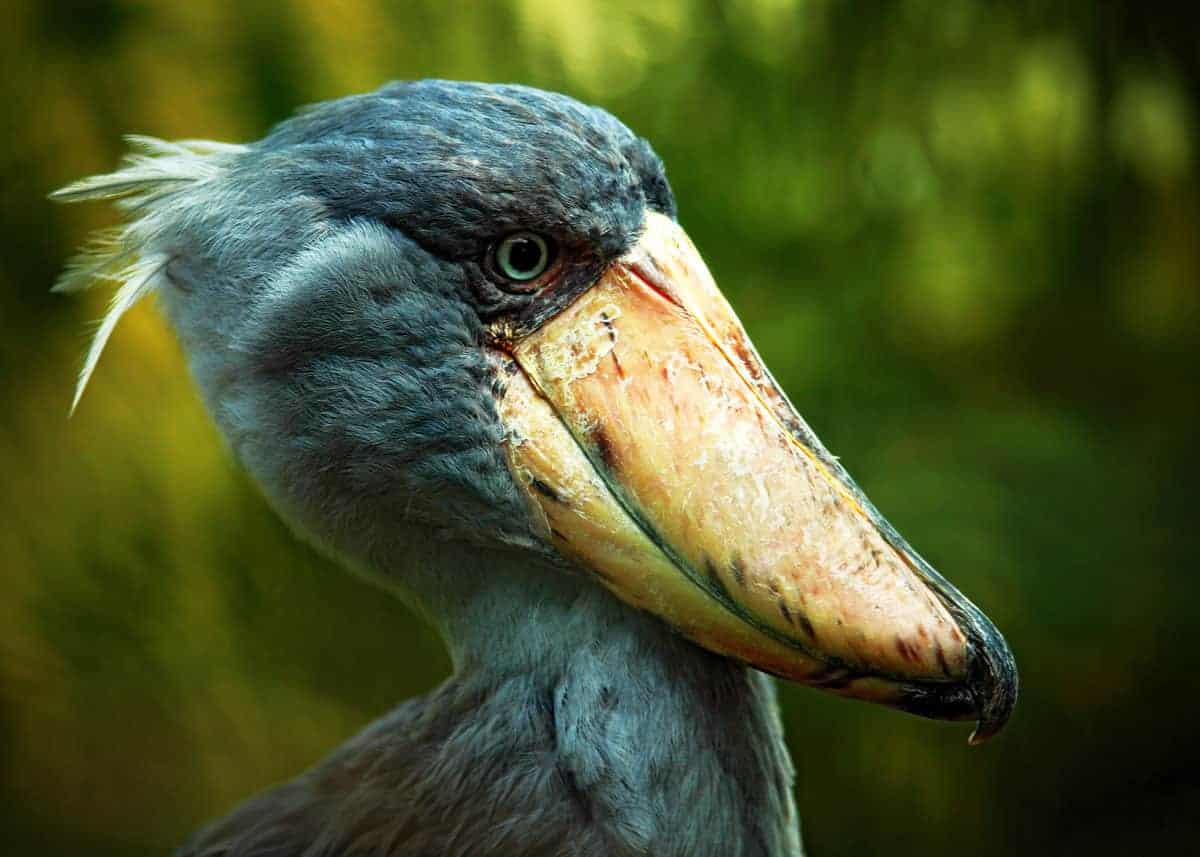
Learn more about the other birds of Uganda.
15 Interesting Facts About the Shoebill
Did you know that the legendary Shoebill Storks can be found in Uganda?
It is true! If you visit the marsh, you might see this extraordinary, one-of-a-kind creature hiding in tall grass and waiting for its prey. The Shoebill Stork is an extremely interesting creature.
Here’s a glimpse of what it looks like in the wild:
Here are fifteen interesting facts about this unique bird!
1. The Young Will Attack Each Other
Young shoebills will fight with one another. It is known that shoebill storks are shy animals that prefer to be alone. They also have territorial behaviors.
When more than one shoebill is born in the same nest, it will compete for attention from the mother.
Scientists and researchers, in the limited interactions they have had with the species, have discovered that shoebills ranging from two months to one year old will fight with one another.
The larger, dominant offspring will fight off their siblings. More often than not, the larger bird forces the smaller birds to flee from the nest and live on their own.
2. They Are Brave – Even Attacking Crocodiles
Living in the marsh presents an extreme danger. Illness is rampant, predators are everywhere, and food can be scarce.
The shoebill stork does not take no for an answer! The species is aggressive. They fight off small and large animals alike.
If a weak animal comes across their path, the stork will leap from their hiding place to turn it into a meal.
If a strong animal makes the stork unhappy for whatever reason, including being in their line of sight, the stork has no problem attacking the creature.
Storks have been known to fight Nile crocodiles, other species of storks, and even each other.
However, even though they pick fights, they do not win all of the time!
3. They Are Extremely Patient
Shoebill storks are masters of patience. They will stand in water, large patches of grass, and other hiding places for hours on end. Shoebills eat at night and sit perfectly still, blending in with the darkness around them.
They know that if they wait long enough for the right moment, they will find their next meal.
At the right moment, the shoebill will leap from cover and attack the prey. They lunge forward with their sharp bill and pick up the creature, devouring it whole.
They will eat eels, catfish, snakes, and lungfish. If it is small enough to fit into their mouth – they will eat it.
Learn more about other animals in Uganda.
4. They Don’t Make Much Noise, But They Are Loud When They Do!
Part of being stealthy and waiting for the right moment is staying silent. The shoebill stork knows this. That is why it will never make noise when hunting for prey.
However, come mating time, the shoebill will release a loud cry to attract a partner.
Their shriek sounds like a machine gun. It is a series of loud, terrifying popping noises. Potential mates love the sound and will come to the noisy shoebill.
5. They Live For Up to 35 Years
The shoebill stork can live for up to 35 years! That is a good age for an animal – especially a bird. The average dog will live to be 15 years old.
Shoebill storks can live long enough to see seven generations.
Some shoebills born in 1984 are still alive today! Shoebills born this year might live to the year 2053.
6. Their Feet Can Be Up to 18 Centimeters Long
The shoebill stork has large feet! The average shoebill foot can be up to 18 centimeters long.
That is half as long as a bowling pin! The average human foot is 23 centimeters.
7. The Beak is Shaped Like a Shoe
Their beak is the reason they are called “Shoebill Storks.”
Their long, shoe-shaped beak is used to eat small animals and fish in a single gulp. The end of the beak curves down and forms a hook. This sharp curve is used to pierce through the bodies of their prey to assist in digestion.
The beak of a shoebill can be 24 centimeters long and 20 centimeters wide. It can be more than a quarter the size of the rest of their bodies.
8. They Use Their Wings to Fly and Keep Balance
The wings are the largest extensions of their bodies. When fully extended, Shoebill Stork wings are five times larger than their bodies! The wingspan of a Shoebill stretches 2.5 meters!
They use their wings to fly, intimidate predators, and keep their balance. Like other birds, the shoebill stork can easily lose balance because they stand on two legs.
Much like how humans will use their arms to keep their bodies from falling backward, shoebill storks will flail and create lift to push their bodies forward. Because they have actual wings and the capacity to fly, this behavior effectively protects them from falling.
Their wings flap at a rate of 150 flaps per minute. That is the slowest flap rate of any bird, but it works. The shoebill flies with its head and neck folded backward to increase aerodynamics and maintain flight longer.
Learn more about the world’s largest birds that fly.
9. They Can Reach 1.5 Meters Tall
The average shoebill stork can grow to be 1.5 meters tall. That is the same height as actors Danny DeVito and Gary Coleman!
Many elementary school children are in the same height range as the average shoebill.
10. Live in Marshes in Sudan, Rwanda, Uganda, and Zambia
The shoebill can be found living in dense marshes and swamps of southeastern Africa. Sudan, Rwanda, Uganda, and Zambia all have marshes where shoebills are present and active.
A marsh is a wetland that is covered in water for extended periods of time. Marshes rarely have trees but the grass is tall and forms hiding places for species such as the shoebill.
Herbaceous plants such as carrots, musa genus, and ragwort grow in marshes. Herbaceous plants are soft and have no woody stem to provide a support structure above ground. These plants grow in the rich, waterlogged soil near rivers and ponds in marshes. They thrive in muddy, low-oxygen soil.
Marshes are found on the edges of lakes and rivers where the waterbed is higher. Insects and small creatures thrive in marshes because of their wet, humid conditions. Diseases frequently flourish and multiply due to the moisture in the air and ground. The stillwater provides a perfect breeding ground for waterborne illnesses.
The Shoebill Stork uses the terrain of the marsh to hide and wait for predators. They prefer to stay in areas that are open, yet offer cover for hiding. They know that if a predator comes too close, they will need to escape.
11. Closely Related to Pelicans and Herons
The shoebill’s scientific name is “Balaeniceps rex.”
The name means “Shoebill, Whale-headed Stork.”
It is part of the Animalia Kingdom, Chordata Phylum, Aves Class, Pelecaniformes Order, and Balaenicipitidae Family.
Scientists estimate that there are less than 10,000 Shoebills left in existence.
The shoebill is genetically similar to Pelicans and Herons, which are all in the same class.
12. They Are Solitary Creatures
Shoebills storks live alone, eat alone, and mate only a few times per year.
Even if a male and female are paired and mate together, they will hunt and eat separately. It is rare to see two shoebills working together.
Scientists believe that mating season occurs during the dry season when the marsh does not have as much water. This season brings less risk to offspring and makes parenting easier for the birds.
Once mating season is completed, the birds will separate. Even though shoebills do not migrate, it is rare that they will encounter each other after the mating season ends.
13. They Build Their Nests in Swamp Grass
The species builds nests in swamp grass and floating vegetation. They are attracted to papyrus for its durability and strength. The bird will create nests in open, remote areas away from other wildlife.
They will lay one to three eggs.
14. Young are Dependant Until 2.5 Months Old
It takes 140 days for a new egg to hatch and turn into offspring that can be fully independent. Once the offspring can hunt for itself and demonstrate the basic requirements of survival, the mother forces it to leave the nest.
Due to the solitary nature of shoebills, it is unlikely that the offspring will see the mother again once it leaves the nest.
15. The Shoebill is Endangered
Unfortunately, this species is nearing extinction. With less than 10,000 birds left, the species is struggling to survive.
The bird is threatened by hunters, the destruction of their environments by humans, and cultural taboos that lead to them being captured by tribes.
Many cultures believe that birds are taboo and bring about bad luck. Some of the native tribes require members to kill the birds in order to cleanse their land from bad omens. This has led to the species becoming extinct in some parts of Africa.
The zoo trade, which was designed to help the species survive, has led to underpopulation. Many birds are taken from their native environment and placed in zoos where they refuse to mate.
Sadly the stress of transit, unfamiliar environments, and the presence of humans in zoos is known to kill the birds.
More reading: How fast can crocodiles run?
And there you have it: 15 shoebill facts.
Your Turn
What do you think of this dinosaur-like bird? Have you seen one before? Join us in the comments!

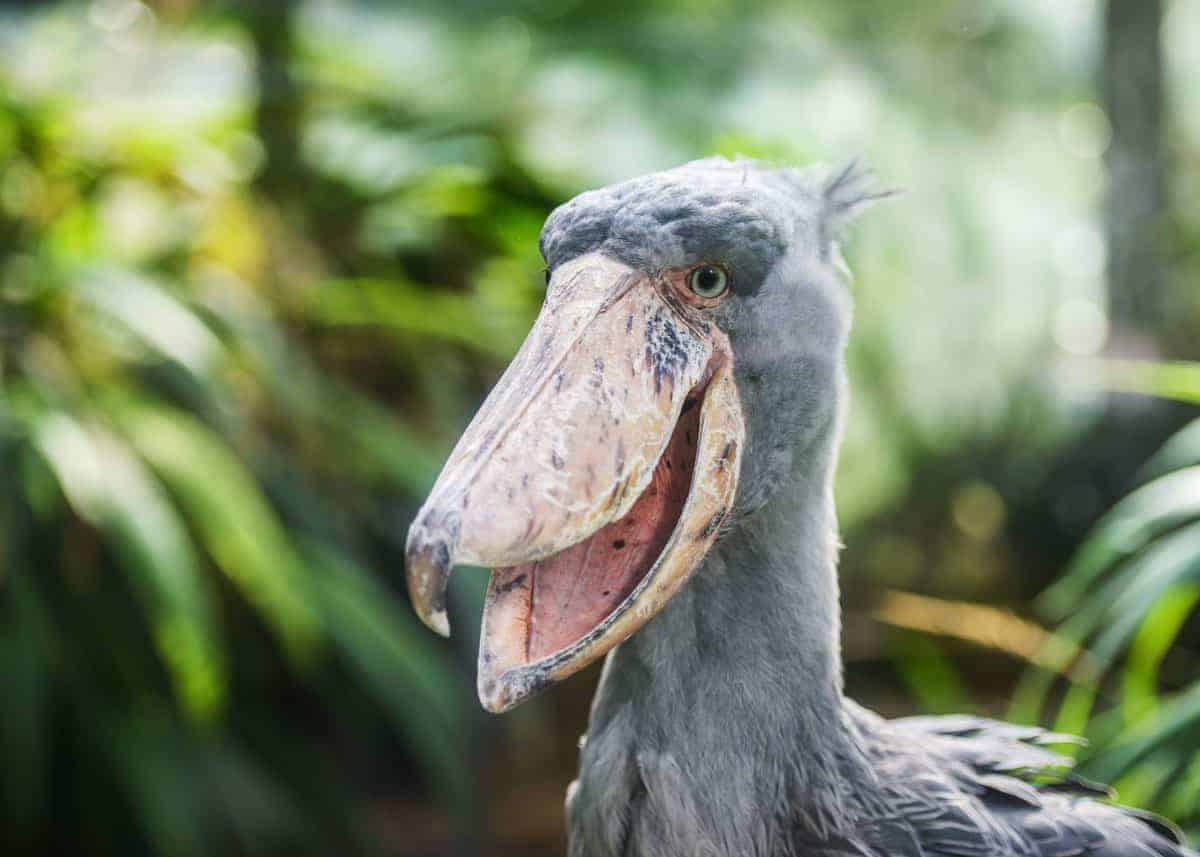
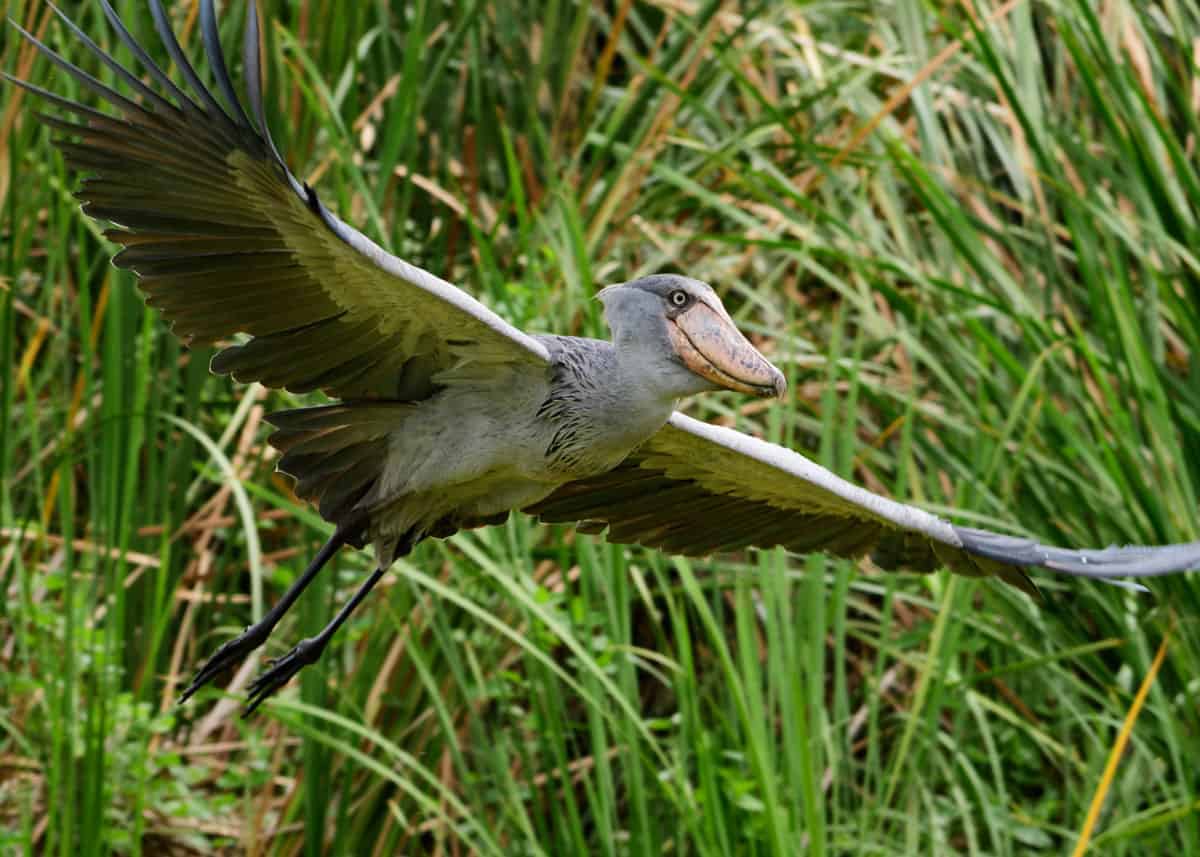
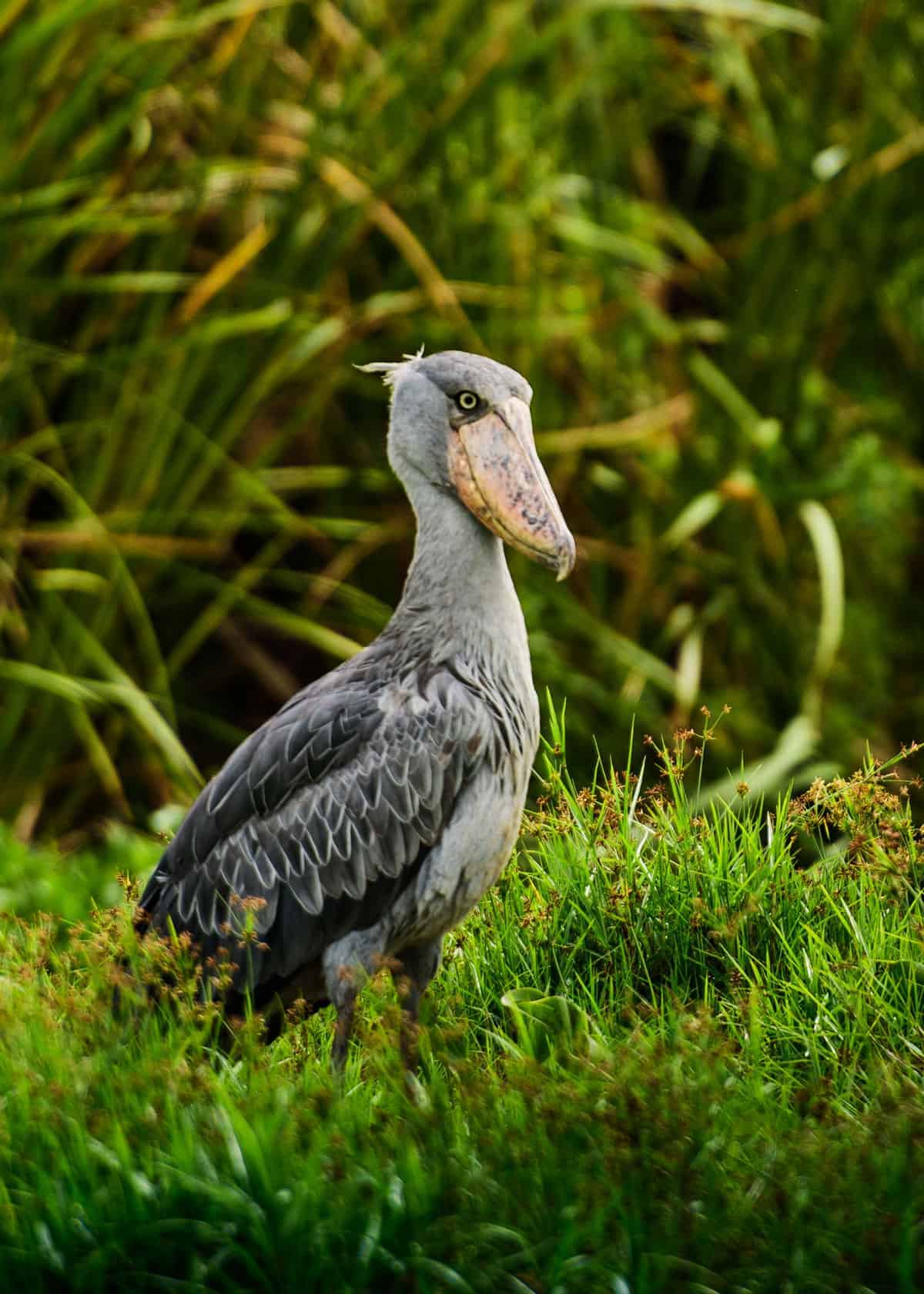
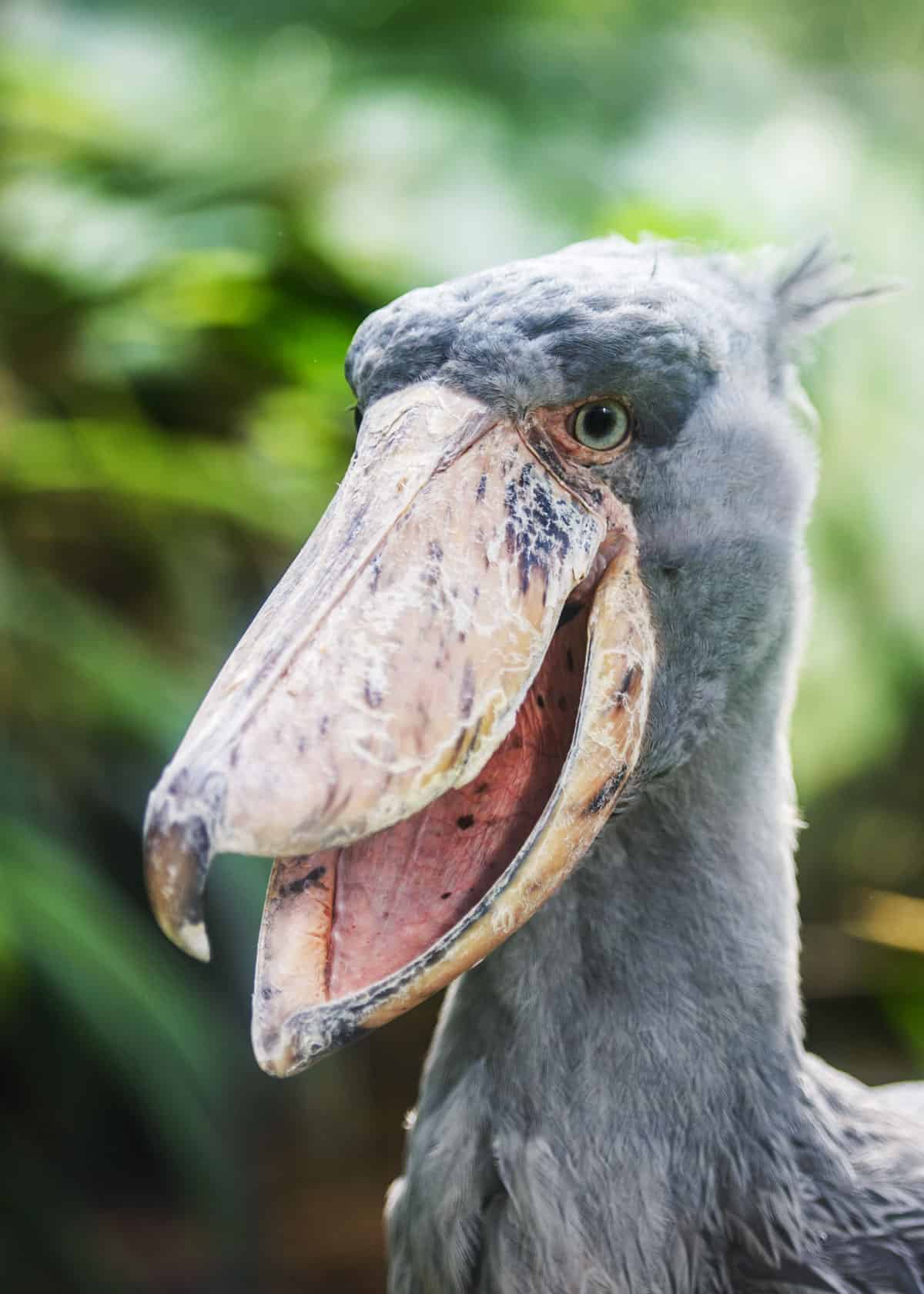
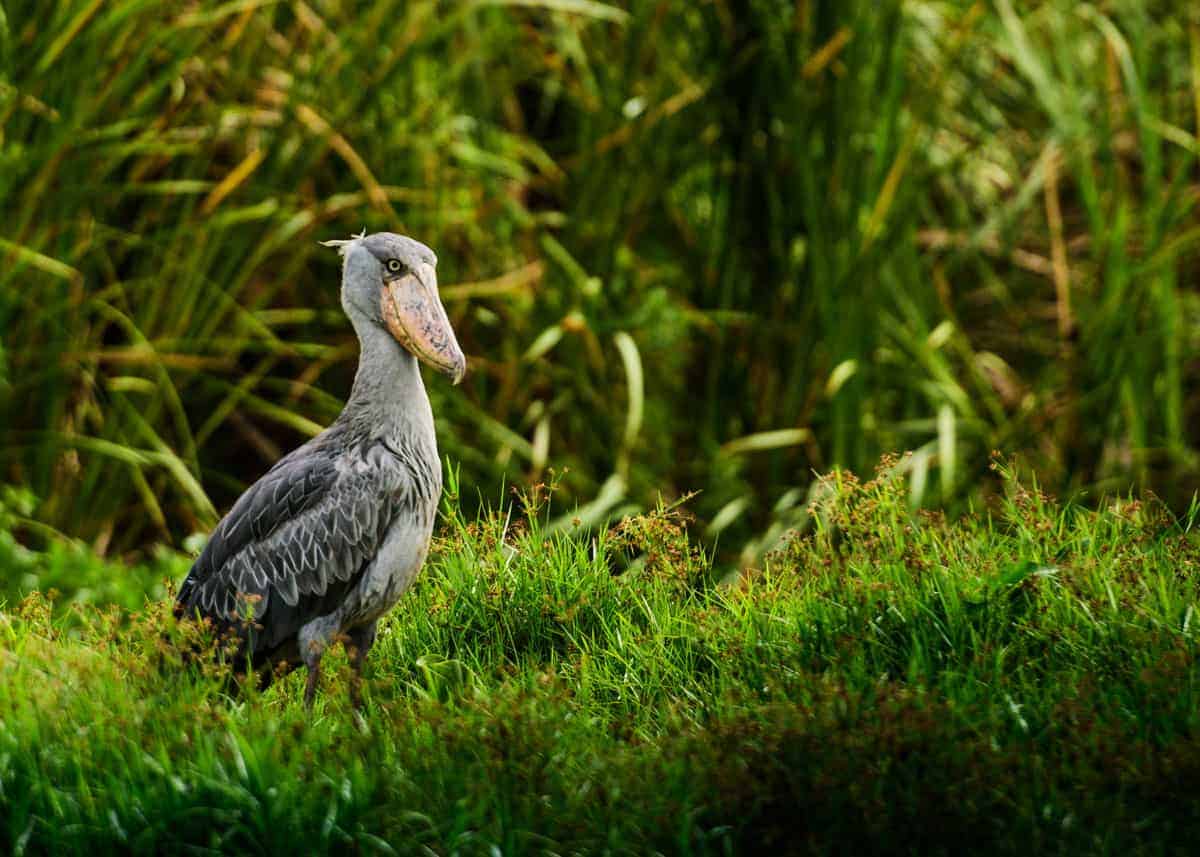






Apparently there’s a shoebill that’s actually cool with humans, and supposedly you bow to it when meeting for the first time, and then he’s cool with humans getting very, very close to him. Even pet him sometimes.
That’s the most fascinating thing I’ve read in a while. Too bad they refuse to breed in captivity. It would be a tragic loss for them to become extinct. Thank you for the informative article complete with pictures. Beautiful bird…fearsome and awesome in the same glance. If I actually saw one I wouldn’t know whether to stop and stare or run.
Saw one years ago in my backyard. I live near a marsh. It scared the daylights out of me. Kept my children and pet inside out of fear for days
@Tondra, “It scared the daylights out of me” I can imagine. Did you ever see it again? Or just that once?
I would perhaps reconsider the use of the word ugly. I think, regardless or species, beauty surrounds us.
Thanks you